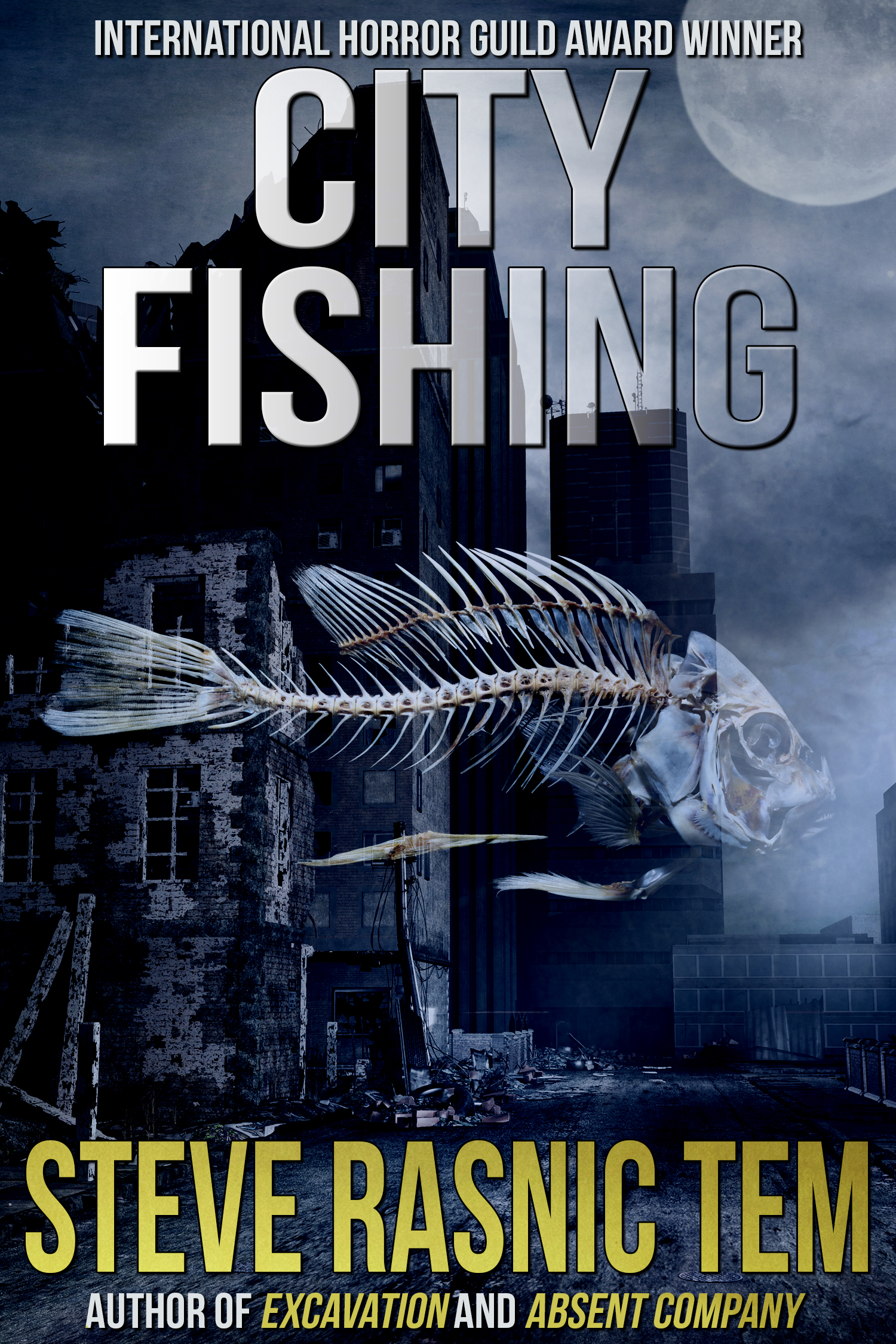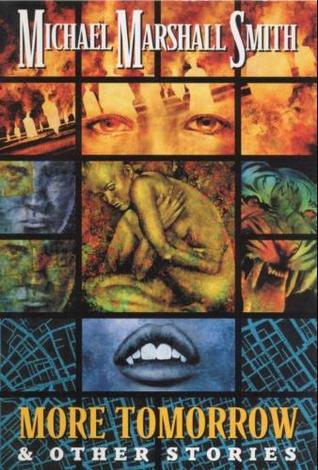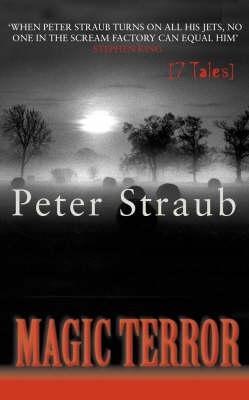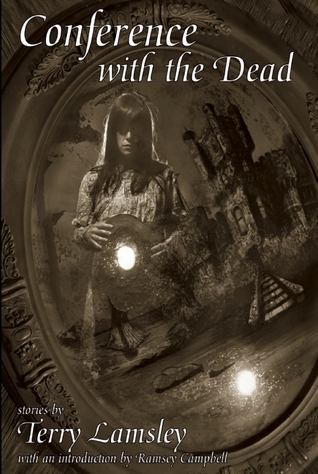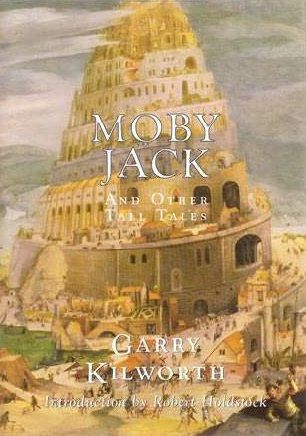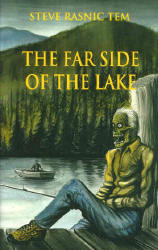 (If you would like to read reviews of previous books in the Best New Horror series, jump over to my Reviews page for links.)
(If you would like to read reviews of previous books in the Best New Horror series, jump over to my Reviews page for links.)
And so we reach book 13, a number that is close to my heart! This chunky entry in the Best New Horror series was a book of two halves. For the first couple hundred pages I thought we were on for one of the strongest books in the series, but then the good stories started to peter out. There were no stinkers fouling up the place, but a few of the longer stories were guilty of overstretching themselves. All in all, this book just scrapes a 4/5.
Best New Horror 13 contains twenty-three stories published during 2001 and runs as follows:
Mark of the Beast – Chico Kidd (4/5 – Luis Da Silva is a Portuguese sea-captain cooped up in a sweltering Indian port around the turn of the twentieth century. A deep unease has settled among the townsfolk. Rumour has it that a werewolf is in their midst, slaughtering young and old alike. While Da Silva waits for the necessary palms to be greased that will allow him to set sail again, a shipping agent puts him in touch with an American sailor, Harris, who is looking for work. The two men meet and agree terms. While they await permission to leave port, Harris frets inwardly about how long he’ll be at sea. He wonders how he’ll be able to restrain himself come the next full moon, and whether Captain Da Silva has picked up on his lycanthropy. This was a really good ripping yarn spoiled only by an excess of run-on sentences and the kind of overwriting that makes your teeth itch, for instance:
“Da Silva had already made up his mind not to beat about the bush by skirting around the topic.”
Nnggnnggggnnnn! I suspect this may have been intentional, as if Kidd had adopted a verbose style more becoming of the age, but I wished a strong editor had intervened. This is still very much worth a read, I should stress, thanks to the magnetic Captain Da Silva and his resourceful teenage son, Ze. Another Da Silva story lies in wait at the end of this book.)

Crocodile Lady – Christopher Fowler (4/5 – A teacher returns to the profession after an absence of several years. She is immediately thrown in at the deep end, helping to shepherd a class of young children on a school outing to the London Zoological Gardens. She effortlessly slips back into the role. Her experience lets her quickly identify the usual suspects, from the troublemakers of the class to the quiet boy she’ll need to keep an eye on. As the class’s regular teacher stands around craving cigarettes and scowling openly over her charges, Miss efficiently organises the children into crocodile formation ahead of a chaotic commute through the London Underground. When the quiet kid goes missing at one of the stops, Miss immediately takes it upon herself to track him down. This un-Fowler-like story may have resulted from a previous desire of his to depart the horror scene. It’s good stuff either way, giving us a flavour of what goes on in a schoolteacher’s noggin (courtesy of fellow author and former schoolteacher Joanne Harris, according to the introduction). But where this story really succeeds – and what qualifies its inclusion in a horror anthology – is the queasy sense of panic Fowler creates as crowds of passengers bustle onto the train at each stop, threatening to break up the kids. Good stuff!)

All For Sale – Ramsey Campbell (4/5 – This deliciously mean Venus Flytrap of a story sees three young men having it large in an unnamed Mediterranean town, hitting the bars within seconds of dropping their bags off at their hotel. Barry wakes the next morning with thoughts of a girl he’d met the night before, and a hum of activity outside the hotel room. Looking out the window he finds a market has sprung up below, large enough to occupy the streets. Leaving his mates to their inevitable hangovers, he sets out to explore the market, hoping somebody can direct him to the girl’s hotel. A misunderstanding with one of the stallholders leads to an argument which attracts the attention of the local police. Barry is sent on his way and soon finds himself getting lost in the seemingly endless market. Everything is for sale, from the mundane to the obscene, the legit, the stolen and everything in between. Everyone in town has a stake in the market, it seems. Even the hotel owner. You may wonder at times where Campbell is going with this story but stick with it because the ending is stone-cold brilliant.)

The Two Dicks – Paul McAuley (4/5 – We’re in an alternative 1974 where Bob Dylan has been killed in his prime, where President Nixon is eyeing a third term in office and where Philip K Dick is incandescent with rage after being asked to sign a pirated copy of The Man in the High Castle. The novel should never have been released but was leaked into the grey market. In the eyes of Dick’s agent, Anthony Emmet, the novel was another of his client’s embarrassing forays into science fiction that should never have been written. Dick wants to nail the fiends who had so flagrantly pirated his work, and soon concludes the only way to do this is by obtaining an FBI badge. He takes it upon himself to not only write a letter requesting such of the President of the United States of America, but also to deliver the letter in person to The White House. To Emmet’s astonishment, Dick’s gambit pays off, and a meeting is pencilled in with POTUS. This was a great read from beginning to end. I get the impression McAuley had a lot of fun putting this story together. The scene in which Dick and Nixon meet, both chaperoned by their respective representatives, is a wonderfully observed slice of comedy. Trouble is it’s not a horror story. Not a single word of it.)

By Her Hand, She Draws You Down – Douglas Smith (4/5 – Cath and Joe are scraping a living on the coast, moving from one vacation spot to the next. Cath sets up shop with her paper and pencils and draws portraits of passing holidaymakers. Joe meanwhile maintains a constant and thinly veiled dread of her. It’s not that Cath is unskilled in her art that unsettles him. Her portraits are often uncannily lifelike. No, what really creeps Joe is what Cath does with the portraits, when the inhuman hunger possessing her demands to be fed, and what happens to the unfortunate souls she has portrayed. Another good story, this. It’s an interesting slant on the vampire myth which takes a pleasingly dark turn the moment the true dynamic between Cath and Joe is revealed. You might see the ending coming a few pages early, but this is still well worth a look.)

O Death, Where Is Thy Spatula? – Poppy Z. Brite (4/5 – Brite pulls on the coroner’s gloves to become his alter ego, Dr Brite: epicure extraordinaire! (Re “his”: Brite identifies as a man, Billy Martin, these days. Back in 2001, he was Poppy Brite. The character of Dr Brite is a woman, and so female pronouns lie ahead…) The good doctor Brite is in awe of restauranteur Devlin Lemon. His dishes send her taste buds into raptures every time, and she is a near-permanent fixture in his restaurant. While examining a recent homicide, Brite realises the gunshot victim before her is Devlin, deceased only hours earlier. Bereft, she refuses to process Devlin’s corpse, instead stuffing him into a mortuary cooler while she considers her next move. While she cannot deny the human tragedy of Devlin’s murder, she feels an equal if not greater tragedy in no longer being able to savour his food, and so a traipse around the voodoo shops of New Orleans beckons. As you may have gathered from the title, this is a story brimming with humour and wit. And food. And body parts. It’s a really good read, and a precursor to a series of dark comedy novels set in the New Orleans restaurant world. Even more books to add to my nascent to-be-read pile, it seems…)

Got To Kill Them All – Dennis Etchison (3/5 – Ray Lowndes is a game show host driving home through Los Angeles after making a quick stop at his local hardware store. With a bag full of murder gear in the back seat of his car and a head full of ideas about his adulterous wife, he slowly ticks over the facts of her infidelity, gameshow style, as he makes slow progress home. He berates someone at a crosswalk after they stop and sit in front of his car. The sitter instantly recognises Ray from the TV and soon talks his way into riding shotgun, in more ways than one. This was okay but didn’t really do it for me. The story was written at a time when Who Wants To Be A Millionaire was ruling the gameshow airwaves, and, as the title would suggest, a time when Pokémon was all the rage, but these elements feel like they’ve been shoehorned into the story solely to give it some pizazz. I’m not sure it needed it. Worth a read if you fancy a quick burst of Americana.)
No More A-Roving – Lynda E. Rucker (3/5 – Paul is a seasoned globetrotter who has lost track of Alyssa, a girl with whom he’d been travelling. Believing Alyssa to have moved on to Ireland, he follows suit, eventually heading to The Seagull Hostel out on the coast. He wakes one night to see a dinghy out among the waves. He fears for the safety of whoever is out there, but reasons there’s little he can do, being holed up in a hostel high upon the cliffs. The next day he sees the boat, empty but intact, secured down by the shore. As his stay goes on, Paul notices some of his fellow backpackers have taken to exploring a nearby cliff, sometimes never returning. He thinks nothing much of it, what with them being travellers and all. All that changes when he realises Mrs Ryan, the owner of The Seagull, is wearing the same scarf that Alyssa had worn. This was okay, with Rucker aiming to produce a Robert Aickman-style story (The Hospice springs to mind) and succeeding to some extent thanks to an eclectic bunch of guests. It’s just a shame I didn’t feel much of anything for Paul. Like Alyssa, I too would have left him behind at the earliest opportunity. I appreciate Rucker was trying to portray a person who had grown jaded of travelling, but it felt to me like the guy had never liked travelling in the first place.)

First, Catch Your Demon – Graham Joyce (4/5 – Joyce gets his writerly oats in an erotically charged story – another of his set in Greece – where a grouchy writer wakes one night to find a bunch of scorpions clinging to the wall above him. He splats a couple of the little buggers but is unable to snuff out a third before it scuttles off into the walls. Wide awake now and baking hot, despite the hour, he steps out to the lakeside near his house to find – can you believe it? – a naked woman. Always happens. The woman’s name is Sasha. She was out swimming in the lake along with her two sisters but has since become separated from them. She stays with our man, exhibiting as much of an interest in his arachnoid houseguests as she has of bonking his brains out. All of which is lovely, but this is a horror story and you can’t go splatting helpless scorpions and expect to get your dick sucked every day. Things inexorably go south for our man the moment Sasha “introduces” him to the hallucinogenic effects of scorpion venom. This is a pretty good read once you’ve coughed and ahemed your way through the shagging. It doesn’t rank among Joyce’s best work, but it’s more accessible than some of his other stories. Worth a look, and perhaps a cold shower afterwards.)
Pump Jack – Donald R. Burleson (3/5 – Cal Withers is driving to the middle of the New Mexico desert, tasked with clearing out Uncle Bill and Aunt Clara’s house now that they’ve passed on. He passes a number of pump jacks on his approach, their metal heads serenely nodding as they scrape the last drops of oil out of the ground. The sight of the pumps doesn’t exactly fill Cal with much peace. He remembers a scary story Uncle Bill would tell when Cal was little, that of a rogue pump jack that stalked the night, preying on naughty children. When Cal gets lost in the pitch-black darkness of the desert, he bumps against the railings of a stilled pump jack that ought not to be there. Sounds silly, doesn’t it? You’d be right, but then Burleson has form when it comes to sprinkling horror dust over the most mundane things. Back in Best New Horror 8, for example, he damn near tied himself in knots trying to make us believe a game of hopscotch was scary. He doesn’t lay on the atmosphere quite as thick this time, thankfully, and even manages to raise a couple of hairs by the end of this tale. But still, silly.)
Outfangthief – Gala Blau (3/5 – Sarah is on the run with her teenage daughter, Laura. She flees a ruthless enforcer, Malcolm Manser, whom she suspects of brutally murdering her husband when he was unable to pay a significant debt. Sarah is keen to place as much distance as possible between Manser and her daughter, knowing the man has a deeply unhealthy interest in the child. In her haste, she pushes her stolen Alfa Romeo too far, crashing it along a country lane. She wakes to find Laura missing and the vestiges of a dreamlike memory that her daughter may have been spirited away to a nearby country house. Meanwhile Manser is hot on their trail, relishing the plans he has for Laura, plans that are far more horrifying than Sarah could ever have feared. Conrad Williams cheekily scores a second story in this book: Blau being a pseudonym of his, and his story City in Aspic appearing a little later. Fun fact: this story was originally published in The Mammoth Book of Vampire Stories by Women. 2001 must have been one of those rare years in which so many horror stories by women were being published that some of them had to be written by men pretending to be women. Weird how I don’t remember that… Anyway, the story itself was okay, scoring points for not skimping on the claret and for not being at all protective of any of its characters. A big problem, however, lies in Manser. For the first half Williams absolutely nails him, presenting a nasty piece of work who leaves you genuinely fearful for Sarah and Laura’s safety. And then… well, I can only imagine Williams set this to one side for an evening and watched Snatch because for some ungodly reason Manser suddenly morphs into a fist-bitingly awful cross between Brick Top and whatever character Vinnie Jones played. This might have read better back in 2001, when Guy Ritchie was at the top of his game, but, two decades on, this reeks of a Lock Stock knock-off.)

The Lost District – Joel Lane (4/5 – Lane brings us more from the bleak streets of Birmingham. It’s 1979: a time of change as the governing Labour Party faces losing power to the Tories. Simon is in his fifth and final year of secondary school and is about to undergo a change of his own. He meets a girl, Nicola, sitting on a park bench. She leaves him with a kiss and an offer to show him around her hometown of Clayheath, a marginal area of Birmingham wholly unfamiliar to Simon. It’s a place where nothing changes, where no-one ever visits and where no-one ever leaves. Simon travels to Clayheath, finding Nicola waiting for him. She pops his cherry, which is nice, and a good way to keep him coming back for more. But with each successive visit to Clayheath Simon finds a little more of the area opening up to him: its abandoned buildings, its people and some truly disturbing sights. This was another good read from Lane that packs a lot into its short runtime. For the most part the imagery within the story plays on subconscious fears of teenage pregnancy after Simon has unprotected sex with Nicola. The other theme of the story, that of change, isn’t handled with quite the same artistry. The shock ending, once you think it through, reveals more about Lane’s politics than it does about his central character, which perhaps wasn’t intentional.)

Simeon Dimsby’s Workshop – Richard A. Lupoff (4/5 – Lupoff charts the steady rise of Regis Hardy, a struggling short story writer who eventually finds success and recognition late in life. Regis is quietly committed to his craft, dedicating an hour every morning, lunchtime and evening to writing stories alongside his regular job. He sends stories to various publications and receives rejection slips for his trouble. His wife, Helena, is wholly supportive of Regis’s quest for that first elusive sale. Someday soon, they know he’ll happen across the right combination of words and phrases that will unlock literary greatness. It takes six years for Regis to sell his first story, and he slowly builds his oeuvre from there. When Regis hits retirement age he believes he has enough stories to warrant publication of a collection, something he believes would nicely cap off his literary career. He is contacted by a new firm, Mantigore Press, whose proprietor, Auric Mantigore, is interested in publishing Regis’s collection, and has lined up none other than famed cover artist Simeon Dimsby to create the artwork. Regis is thrilled at the prospect, and in his excitement arranges for Helena and himself to travel across the country to visit upon Mantigore and Dimsby, a hasty act he might live to regret. This is a really good read that acts both as a rallying call to struggling writers to never give up hope, and as a cautionary tale about not jumping into bed with the first publisher that’ll have you. Lupoff was letting off a bit of steam about a number of unprofessional small presses, it seems. Plus ça change in light of the recent furore surrounding ChiZine Publications’ treatment of its authors.)

Our Temporary Supervisor – Thomas Ligotti (3/5 – Ligotti continues a mini-theme of corporate horror (following his book, My Work Is Not Yet Done), this time presenting a tale where workers aren’t so much individuals as citizens of the companies they work for. We follow one such worker as he spends mind-numbing hours every day standing at his assembly block slotting bits of metal together, never knowing their actual function. The supervisor occupies an office at the corner of the shop floor, its frosted glass walls preventing a clear view inside. When the supervisor falls ill, the workers are informed of a temporary replacement, but none of the workers ever see him, only shapes and dark shadows moving behind the glass. When a colleague, Blecher, can take no more of the job our man watches him storm into the corner office and confront the supervisor. Soon Blecher is running screaming from the factory, and is found dead shortly afterwards, an apparent suicide. A replacement for Blecher is transferred in from another factory, a man whose furious work ethic forces everyone to up their game. This is a good read but doesn’t give us anything we haven’t seen before. Come to this story for another opportunity to rage at the corporate mindset, but stay for the sumptuous writing.)
Whose Ghosts These Are – Charles L. Grant (4/5 – Hugh Cabot is a retired beat cop struggling to fill his days. He visits the Caulberg Luncheonette for a bite to eat and to chat with Lana, a waitress there. Lana and Hugh were once lovers, but that was a long time ago. Lana still feels enough for Hugh to worry whenever he doesn’t show at the diner for a while, especially when the local news is filled with stories of a serial killer on the loose, nicknamed The Ghost. Hugh spends a day visiting the city museum, which is hosting an exhibition entitled The Museum of Horror Presents. He browses a number of glass cases that supposedly house the preserved bodies of murderers. He eventually finds an empty case, simply labelled “The Ghost”. A sick joke from the curators, or could there be something more sinister going on? Grant was known as a master of quiet horror, and this effective little chiller is another quality offering. I’d strongly recommend skipping over Grant’s spoilerific introduction, though.)
Shite Hawks – Muriel Gray (4/5 – Gray detonates most of Best New Horror’s C-bombs for this book and a few more to come in a disturbing and volcanically sweary (and also very good) story centred on a Scottish rubbish tip. A small crew of men tend the tip: the simple-minded Spanner, the gruff foreman Belcher and the youngest member of the crew, The Kid. They bicker and fuss among themselves as they go about their work, but all three are focused on the next Rising. Previous Risings have seen the men getting a small wish of theirs granted, but only in exchange for a living sacrifice. The gulls are long gone, the rats along with them. No tramp or pisshead has tried walking across the tip in a while and, much to Belcher’s fury, someone has repaired a child-sized hole in the fence. The Kid knows why Belcher is so angry about the fence being fixed. The man’s wish is immense, surely much too big for the Rising to grant. And what is left around the tip for them to sacrifice? This is one of those stories that works entirely within its own rules. Immerse yourself in this gritty slice of weirdness, however, and you’ll be rewarded with a mighty fine read. Gray is better known as a broadcaster and journalist, but she also wrote a handful of horror novels in the mid-to-late-90s. The publication of this story heralded a lengthy stretch away from the horror genre, from which she has thankfully returned, contributing the odd story to anthologies such as Horrorology and New Fears (both of which wait patiently in my to-be-read pile). I look forward to reading them.)

Off the Map – Michael Chislett (3/5 – Fletcher is proud of his knowledge of London, believing there to be no stretch of the Big Smoke he has not explored. That is until a friend, Mathews, describes an incredible view of London he’d once enjoyed from a small secluded area tucked up a hill overlooking Mabbs End. It’s a spot that Fletcher cannot place. Could there be a nook he’d missed? One that offered an unrivalled view of London, no less? When our man later finds himself near Mabbs End he soon locates the path Mathews had described. As he takes a twisting route up through interminable backstreets he finds the houses around him getting increasingly taller. He meets a number of people along the way. Some cannot say what lies at the end of the path despite having lived in the area for decades. Others don’t seem to care much for what’s up there at all. When Fletcher finally makes it to the top he finds an entirely different view to that which he was expecting. This story is an object lesson in why you should never waste the reader’s time at the beginning of a story. Valuable pages are spent on dull and largely inconsequential waffle between two old London bores. Who honestly cares about the precise location of Mabbs End? Can we not start the story now, please? Things improve once we’re out and about in London, but, with a good chunk of my goodwill spent by that point, I honestly didn’t care one way or the other what Fletcher would find.)

Most of My Friends Are Two-Thirds Water – Kelly Link (4/5 – Link writes herself and a friend, Jak, into a bizarre story in which the world is in the middle of an invasion by an alien species of blonde women who all smell of Lemon Fresh Joy and look like Sandy Duncan. (Checks Wikipedia. Shrugs.) We glean snippets of the situation through intermittent conversations. How Jak had followed an elevator full of Sandy Duncans up to the top floor of a building, for example, only to find it empty and under construction. Or how a new neighbour Jak once accidentally stalked had forgotten about the whole incident, instead coming on strong, with one thing leading to another, leading to a very strange revelation indeed! This was a lot of fun. Link has a gift for comedy, setting up zingers and dropping them at just the right moment for maximum effect. Even during a re-read I found myself laughing at all the same jokes. Matters are helped by Link’s conversational style, a slacker vibe that makes the story so easy to read it’s like not reading at all. It won’t be to everyone’s tastes, and certainly not something to recommend to your parents – goodness me, no – but for me this was probably the best story in the book.)

City in Aspic – Conrad Williams (3/5 – For Williams’ second story in BNH13 we’re checking in on Massimo as he winds down the Hotel Europa for the winter months. He’s agreed to play caretaker during the off-season but is none too chipper about the arrangement. The hotel was once his birthright but had to be sold to fund his ailing father’s treatment. While on his rounds he finds a ladies glove on the lobby staircase and sets it aside for safekeeping. Later he escapes to a nearby trattoria and catches sight of a one-handed woman through the window. He soon realises her other hand is gloved. He hastens to her location on the off-chance she’d lost the glove he’d found, but is too late to catch her. The next morning Massimo is shaken to learn someone had been murdered in the area during the night, and that the hand of the corpse had been skinned. To say Williams had never been to Venice at the time of writing this story, he does a bang-up job of transporting us there, or at least to a romanticised version of it. Chalk one for atmosphere, then. Now if only Williams had spent the same amount of effort on the story. The plot is a house of cards that expects the reader to accept a number of large contrivances. For instance, we are expected to believe Massimo can dial someone without thinking (no mobile phones here, kids) and be connected to a friend he hasn’t spoken to since his teenage years. Massimo, it should be said, is in his mid-forties. It gets worse. The ending asks us to accept Massimo had not only forgotten the horrible incident during his childhood that sets up the entire story, but had also conveniently erased from memory the friend to whom it happened. Frankly, Bobby Ewing may as well have stepped out of the shower at that point.)

Where All Things Perish – Tanith Lee (3/5 – A chance sighting of dull old Mr Polleto calls to mind an unusual episode in Frederick’s life. He remembers how the old man had once lived in the same quaint English village as Aunt Alice, whom Frederick would often visit. During one such visit Frederick walks past Josebaar Hawkins’s old country pile. The house has been abandoned for a long time, ever since Hawkins was hanged for bricking up his wife in the attic, murdering her. The sight of an attic window, then, seems unusual. Frederick digs a little deeper into the Hawkins place during subsequent visits to his aunt, finding the condition of the house noticeably deteriorating each time, with carpets of ivy peeling away from the walls, and patches of earth emerging where there was once thick vegetation. He spies a ghostly figure standing at the attic window, a catalyst it seems for an accelerated growth of whatever malaise is afflicting the Hawkins house. Lee packs an awful lot of story into this novelette. And backstory. And back-backstory. It borders on explainitis after a while, which isn’t necessarily a bad thing provided there is enough good stuff to keep the reader invested. Sadly, that was not the case here.)

Struwwelpeter – Glen Hirshberg (3/5 – In this World-Fantasy-Award-nominated novella we’re in the company of troubled teen genius Peter Andersz. He’s the kind of kid who can ace a half-hour test in five minutes. He’s also a kid who’ll sometimes burn his father’s belongings apropos of nothing. He can be cold and distant to his dwindling circle of friends, occasionally snapping at them. He sometimes backchats his father, swearing at him, calling him Dipshit Dad. When Peter gets like this, Mr Andersz refers to his son as Struwwelpeter (after the German children’s story, Shock-Haired Peter). So, yeah, not a happy household. Peter and his friend, Andrew, head out to old man Paars’ house accompanied by the Mack sisters. Peter is keen to show the Macks a large bell he and Andrew had found hanging in Paars’ garden, dead centre of a large eye motif cut into the grass. The bell, when rung, is said to wake the dead. I can’t say I was bowled over by this one. It’s as if the story doesn’t know what it wants to be. The first half illustrates a killer in the making, then gets bored of all that and becomes a spooky house story instead. The story picks up steam once we get into old man Paars’ house, but far too many pages are spent getting there. Your mileage may vary – it was up for a gong after all – but this won’t be a story I’ll be rushing back to re-read.)

Cleopatra Brimstone – Elizabeth Hand (3/5 – Puberty brings about something strange in Janie. Nowhere in her books do they mention the growth of three remarkably long hairs at the inside of each eyebrow. She plucks out the hairs and gets on with her life. At university she studies entomology, specialising in moths and butterflies, and is utterly absorbed in the subject. One night on campus she is attacked and raped while returning to her room, her rapist urging her: “try to escape”. Janie returns home to her parents to recover, where she is soon offered to housesit across the pond in London. She accepts, and swiftly undergoes a butterfly-like transformation of her own. Her eyebrow hairs grow back, now incredibly sensitive, delivering a lightning bolt of pleasure and pain at their touch. Her confidence returns in spades, sufficient to see her get her head shaved and undertake a complete overhaul of her wardrobe. She visits fetish shops to rig the bed with chains and cuffs. She steps out into the night as Cleopatra Brimstone, looking for a man to bring home, to tie to her bed, to urge them: “try to escape”. This novella, like Struwwelpeter, was nominated for a World Fantasy award back in the day, and went on to win an International Horror Critics Guild award for long fiction. Sadly this was another well-regarded story that didn’t really do it for me. There’s good stuff to be had in places, but the story is overlong, focused on a character who wasn’t terribly likeable and lumped with an ending so naff I damn near dropped the book. Again, your mileage may vary.)
Cats and Architecture – Chico Kidd (3/5 – Jo Da Silva is seeking some writerly inspiration in Venice. Getting nowhere, she steps to the window and looks down on a small piazza outside her apartment. She detects movement in an old building across the way, an apparition at a loosely shuttered window. She shakes it off, blaming a head full of other people’s ghost stories when she ought to be writing her own. She later receives a mysterious phone call, asking: “Are you coming?”, then “If you don’t come to see me, I’ll come to you”. Or was it just a waking dream? When a key is left on her desk, a key she knows will open the building opposite, it seems as if someone, or something, is very keen for her to take a look. There are a few stories in this book which are guilty of trying too hard. The stories tend to be written in service of a cool idea the author had at the outset. Sometimes they get away with it. Other times, the story fails to convince. Guess which category this story falls into. It’s a shame because when Cats and Architecture is able to unshackle itself of all the scene-setting and is finally allowed to flow, it can be pretty absorbing stuff. A scene in which Jo steps into the afters of a summoning ritual, for example, is a gruesome delight. We also get to meet Jo’s (maybe-)ancestor Captain Da Silva during a flashback, and discover how the man lost his eye. You might not get this far, though, after a first half spent making its rather silly premise believable. If you can suspend your disbelief for twenty minutes, give this one a whirl.)
And so ends another monster review of Best New Horror. As with previous volumes of the series, if any of the stories tickle your fancy then you shouldn’t have too much trouble tracking down a second-hand copy on the interwebs. Failing that you can purchase an eBook copy from most outlets for a few quid. As with previous reviews, the book images will take you to their respective pages on Goodreads should you want to explore an author’s work a little deeper.
Thanks for reading! Swing by again for Best New Horror 14, why don’t you?
LP







